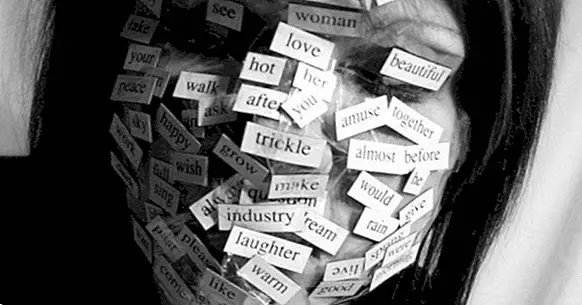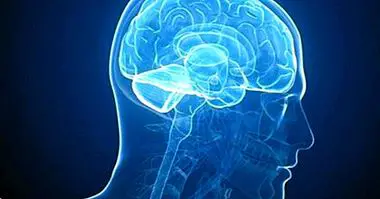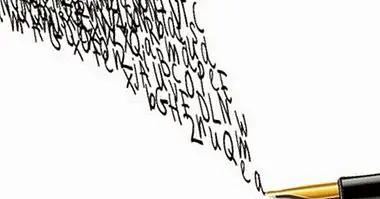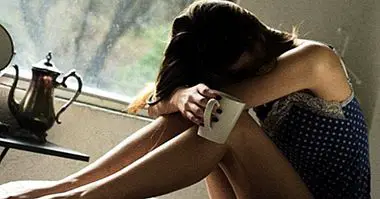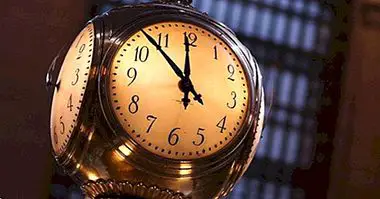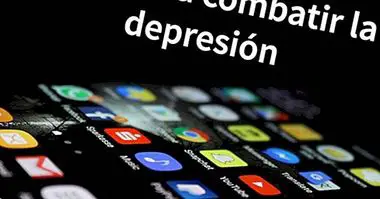Combat anxiety: 5 guidelines to reduce stress
Anxiety is a vicious circle from which it is difficult to leave. We are facing a psychological disorder that is a true pandemic in today's society.
But, What exactly is anxiety, what symptoms does it present and how can we get out of this situation?
What is anxiety?
Anxiety is a mental state of anticipation, in which we experience nervousness and restlessness. It is an unpleasant sensation that puts us in tension. Anxiety is a normal response of our body , which interprets that we must be alert to an event close to the time, but some people are seized by anxiety and report a series of symptoms and signs (psychological and somatic) annoying.
The feeling of anxiety is particularly difficult to describe, it can not always be related to a specific origin (examination, medical results, etc.) and feeds on the consequences that it generates (such as the postponement of pending tasks). .
Fighting anxiety and its causes
Therefore, it is complicated to face it, although not impossible. These five guidelines for fight anxiety They can be of help in mitigating their adverse effects and understanding their nature better:
1. Learn to be your own boss or boss
Anxiety is a unpleasant feeling that most of us want to avoid . The problem is aggravated when we decide to compensate the state of anxiety by resorting to stereotyped and repetitive forms of behavior. These are behaviors that usually start unconsciously, are partly automatic and can be more or less simple (stretching or pulling the hair, tapping one leg, etc.) or something more complex (travel to the refrigerator and eat something ).
In addition to the adverse effect that these behaviors can have on our body, such as obesity or hair loss, getting carried away has the disadvantage that it makes us enter a vicious circle : as they are so associated with periods of stress, they act as a reminder that the sensation you want to avoid is there. That is why, to combat anxiety, it is convenient to recognize these stereotyped patterns of behavior and put them to a halt.
2. Combat anxiety is to fight the "I'll do it tomorrow"
Periods of anxiety may have been triggered by day-to-day elements that are related to work, obligations and decision making. For this reason, combating anxiety also means recognizing situations in which this sensation can lead to an self-fulfilling prophecy in which the negative mood itself invites throwing in the towel before time.
Anxiety is one of the ways that fear can begin to do something that can go wrong and that, as a consequence, is postponed again and again in a process called procrastination. Paradoxically, these postponements that make anxiety have reason to be, because thanks to them the obligation that generates stress is still there.
3. Divide your day to day in small pieces
Surely you have realized that, from the moment you start a task that makes you too lazy to do, it becomes more and more enjoyable and assumable. Something similar happens with anxiety: to keep attention away from that which produces tension, start an activity It is much more effective than thinking about starting that same activity.
And the fact that being aware that anxiety acts as a burden when doing things we want to do is in itself a anxiogenic source . If you want to make sure that what is done must be done without anxiety acting as a brake, nothing like breaking the most complex tasks into short sequences. If you have to write a report, for example, the first task can be as simple as turning on the computer and opening a text editor. The following sequence must start from there and also be very brief (write the first paragraph, etc.).
4. Take your time
The other face of combating procrastination is making sure we make good use of the time we dedicate to rest , since being all day doing things to try to distract our attention can be exhausting. If we do not know the source of the anxiety, this coming and going of distracting activities can act as a reminder that we are anxious, and if the source of the anxiety is in the pending obligations, a feeling of guilt can be generated. That is why it is worthwhile to be methodical with the rest periods and make these allow a better orientation towards the objectives.
In addition, breathing control exercises that are included in activities such as meditation, Mindfulness or Tai Chi they are very useful to reduce the levels of stress that set in motion all the anxiogenic machinery. Take a while to relax Although the body asks for the opposite and making these times not longer than necessary to adjust hormone levels are two basic guidelines to combat anxiety.
5. Do not insist on making anxiety go away
From a biological point of view, Anxiety is the result of complex neuroendocrine dynamics with which nobody would want to have to deal without the help of the subconscious processes that regulate them. Therefore, it is important to be clear that anxiety can only be fought indirectly. No matter how much you try to ignore the feelings of tension and fear, they will not go away just because our conscious mind asks for it with kindness.
In fact, trying to mentally suppress these biological processes is just a way of recognizing that this problem is there. For anxiety to stop being a problem, you have to fight against its symptoms by creating new behaviour standards . The solution is not in the privacy of one's mind, but in the relations between the body and the environment.
Bibliographic references:
- Mayor Lapiedra, M. T. (1991). Behavioral disorders in childhood and their relationships with the experiences of anxiety and depression. Zaragoza: University.
- Arce, E. A. (2000). The man of the 21st century: anxiety or fullness? Buenos Aires: Editorial Argenta Sarlep.
- Brinkerhoff, S. (2004). Drug therapy and anxiety disorders. Philadelphia: Mason Crest Publishers.
- Cano-Vindel, A., & Fernández-Castro, J. (1999). Cognitive Processes and Emotion. (Monograph of 'Anxiety and Stress'). Murcia: Compobell.
- Friedman, S. (1997). Cultural issues in the treatment of anxiety. New York: Guilford Press.
- Kasper, S., Boer, J. A. d., & Sitsen, J. M. A. (2003). Handbook of depression and anxiety (2nd ed.). New York: M. Dekker.
- Root, B. A. (2000). Understanding panic and other anxiety disorders. Jackson: University Press of Mississippi.
- Veeraraghavan, V., & Singh, S. (2002). Anxiety disorders: psychological assessment and treatment. New Delhi; Thousand Oaks, CA: Sage Publications.

